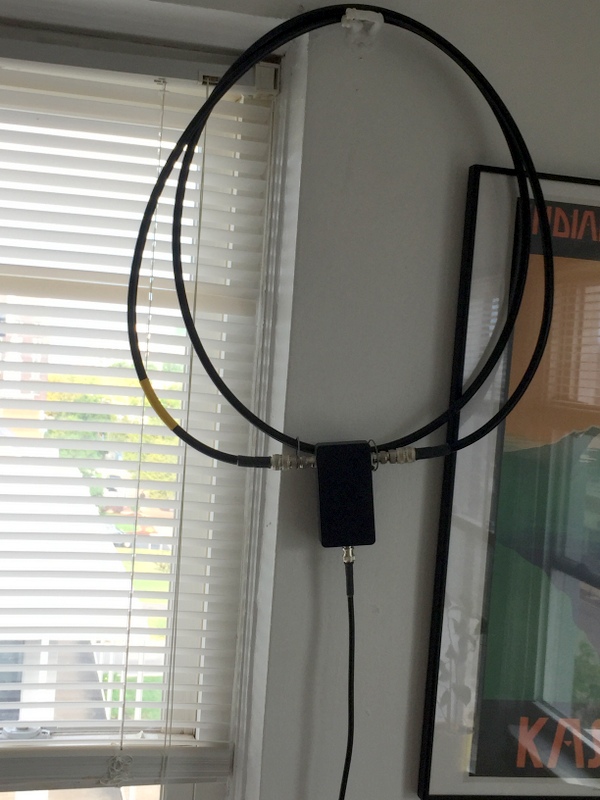Many thanks to SWLing Post contributor, Larry Thompson (WPE8EKM), who writes:
I’ve just finished building a variation of the W6LVP amplified magnetic loop antenna. I was able to purchase the preamplifier, power inserter, and the power supply separately. I then created my own loop antenna using LMR400Max coax and designed my own knock-down PVC support. I wanted something extremely compact and portable to take on sae-kayaking expeditions and to DXpeditions to Africa.
I spent many years teaching in the DRC Congo and hope to return.
I’ve used a 6’ loop, a 9’ loop, a 12’ loop, and an 18’ loop. All do very well, but the 6’ and the 9’ seem to do the best. I’ve been using the 9’ length of coax doubled into two loops and that seems be be doing extremely well.
The signal strength from the W6LVP variation is equal to my Parr EF-SWL End-Fedz 45’ dipole, but the reduced noise level on the bands is amazing. I live in a central city high-rise with no possibility of an exterior antenna. The EF-SWL is strung out a 5th floor window down the side of the building. It performs well, but with a high degree of noise. My QTH is rampant with QRM and RFI noise. The W6LVP amplified magnetic loop has really resolved that in a big way.
The bands are horrible at the moment, so evaluating the loop antenna is difficult. But the cleaner, stronger signals of CHU Canada on 3339 kHz and 7850 kHz, as well as WWV on 10,000 kHz is impressive.
I’m impressed with the reduced noise level on the bands tuning across them, as well as the noise-free signal once you lock into a station. I’ve heard hams on the 17 mb for the very first time.
So far, I’m very impressed with the performance of this amplified magnetic loop.
Very cool Larry! You’ve build a compact loop that can bring the RFI down to a tolerable level–I’d say that’s a complete success. Thanks for sharing!
Click here to read our previous article about the W6LVP loop.


I have the W6LVP reciever loop with both the full size and compact elements which are made of co-ax. I believe the shield is the actual antenna element. I don’t know if the center is also connected to the shield or not.
I would like to hear of any signal strength comparisons made between multi turn and single turn elements.
I like Loops, too! Seems like winding the loop twice reduces the aperture (diameter) but increases the broadside cross-section area of the radiator. There might be some interesting possibilities to try to get an optimal combination of winding loops vs. diameter for HF frequencies. Typical designs are 1 meter diameter and only one loop. My 14 inch 3-loop design does well but is not as portable as yours.
Would you be willing to share a parts list and some challenges in building it?
I know it’s a … well, ‘controversial’ might be too soft a word 😉 – document, but the “Small Antenna Handbook” by Hansen & Collin* makes the point that a multi-turn loop is, at best, only as efficient as a single turn loop of the same diameter with the same loop diameter / conductor radius ratio (i.e. smaller conductor).
If you unravel the maths they do to get there, you also figure out there’s no improvement gained from the ‘increased broad-side cross-section’ – it actually decreases sensitivity in that direction slightly (& simultaneously reduces the null @ 90 deg slightly too)
R/L/C losses in the multi-turn loop will also be higher than the single-turn version, although that may make it easier to match the loop to the feedline / receiver.
*It’s also a worthwhile read for their hilarious deconstructions of what they call ‘pathological antennas’ 😉
Hi Larry,
Could we get some details on the design of your loop, schematics, etc. I am curious to see how the loop coax shields are connected to the pre-amp box.